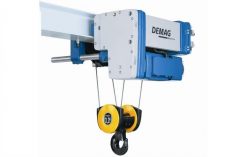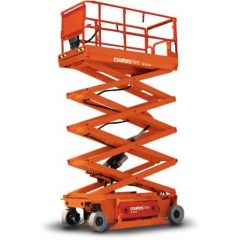Lifting Devices
What is a lifting device?
According to Ontario Regulation 851 (O.Reg 851) for Industrial Establishments, a lifting device is “a device that is used to raise or lower any material or object and includes its rails and other supports but does not include a device to which the Elevating Devices Act applies”.
Examples of lifting devices include but are not limited to hoists, jacks, forklifts, scissor lifts, and overhead cranes.


In accordance with Ontario regulation, lifting devices are required to be:
- Constructed and equipped to ensure the safety of all workers.
- Inspected by a competent person prior to first use and annually thereafter. A permanent record of the inspection must be kept.
- Plainly marked to enable the operator to determine the maximum rated load that the device is capable of lifting.
- Equipped with a cab or guard for the protection of the operator if the operator may be exposed to the hazard of falling material.
- Operated only by a competent person (i.e. a person that has been sufficiently trained).
- Operated so that no part of the load passes over any worker.
- Used with guide ropes if a worker may be endangered by the rotation or uncontrolled motion of the load.
Working Safely
Any person operating a lifting device at Carleton University must be properly trained. Workers should be aware of hazards associated with lifting devices.
- Receive training and ask questions BEFORE working with a new piece of equipment.
- Be aware of people around you when operating machinery.
- Take time to ensure your load is stable, balanced and within the device’s maximum load capacity.
- Avoid sudden and drastic increases in load (“shock loading”).
- Always be on the lookout for obstructions (e.g. debris, power lines) to avoid injury or damage to equipment.
- Be aware of the equipment’s limitations. Over-reaching with too heavy a load can cause the equipment to tip or roll over. If using equipment that extends to great heights (e.g. crane), be aware that strong winds can affect the equipment’s limitations further.
Inspections
All equipment used for working at heights (e.g. lifting devices, access ladders, roof anchors) is inspected annually. These inspection reports are readily available to workers in the areas in which the equipment is kept.
Report damaged or dysfunctional equipment to your supervisor immediately. We have a shared responsibility to ensure a safe work environment.
A good catch today prevents an injury tomorrow!